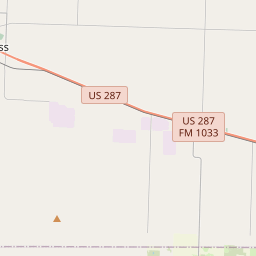Colonel William Edgar Hughes of the Mill Iron
Historical marker location:






Born 1840. Came from Illinois to Texas, 1859. During Civil War rose from private, 1st Texas Artillery, to Colonel in 16th Cavalry. Was in bloody battles of Shiloh, Chickamauga, Nashville, Richmond. After war, when "didn't have 2 pairs of pants", taught school and read law in Weatherford. As lawyer, took many land cases. In 7 years became organizer and president, City Bank of Dallas (now 1st National, Dallas). Later, an officer in Exchange Bank, Dallas; Union Trust Company, St. Louis; Continental Trust Company, Denver.
In 1880, bought half interest in Mill Iron Ranch. Purchased small holdings from Pease to Red River-bridle bits, DV's, Diamond D's and others. Range lay in Childress, Cottle, Hall, Motley counties. In 1885 added windmills, wells, to run larger herds-up to 50,000. In early years used dugouts, chuckwagons for headquarters. First small ranchouse was built at windmill 62, near Estelline. Bought out Rocking Chair Ranch, Collingsworth County, 1896. Until 1898, ran only longhorns. Was said to have had the largest men, most practical jokers, longest cattle drives, biggest horses in Texas. He sold off the Last Mill Iron Herd in 1918-year of his death. (1965)
April 12, 1861: The Civil War begins with the Confederate attack on Fort Sumter, located in South Carolina's Charleston Harbor.
April 15, 1861: President Abraham Lincoln issues a call for 75,000 volunteers to serve in the Union Army to suppress the rebellion.
May 24, 1861: The first major land battle, known as the First Battle of Bull Run (or First Battle of Manassas), takes place in Virginia. It ends in Confederate victory.
September 17, 1862: The Battle of Antietam in Maryland becomes the bloodiest single-day battle in American history, with heavy casualties on both sides. The Union forces, commanded by General George McClellan, manage to halt Confederate General Robert E. Lee's advance into Union territory.
January 1, 1863: President Lincoln issues the Emancipation Proclamation, declaring that all slaves in Confederate-held territories are to be set free. However, the proclamation does not immediately free all slaves in the United States.
July 1-3, 1863: The Battle of Gettysburg in Pennsylvania takes place, resulting in a significant Union victory and inflicting heavy casualties on Confederate forces. It marks a turning point in the war.
November 19, 1863: President Lincoln delivers the Gettysburg Address, emphasizing the principles of liberty, equality, and the preservation of the Union.
April 9, 1865: General Robert E. Lee surrenders to Union General Ulysses S. Grant at Appomattox Court House in Virginia, effectively ending the Civil War.
April 14, 1865: President Lincoln is assassinated by John Wilkes Booth while attending a play at Ford's Theatre in Washington, D.C.
May 10, 1865: Confederate President Jefferson Davis is captured, signaling the collapse of the Confederate government.
December 6, 1865: The Thirteenth Amendment to the United States Constitution is ratified, officially abolishing slavery throughout the country.
While this timeline provides an overview of key events, it is important to note that the Civil War spanned over four years, from 1861 to 1865, and encompassed numerous battles, campaigns, and political developments that shaped the course of American history.
As one of the most visible programs of the Texas Historical Commission (THC), historical markers commemorate diverse topics in Texas history, including: the history and architecture of houses, commercial and public buildings, religious congregations, and military sites; events that changed the course of local and state history; and individuals who have made lasting contributions to the state, community organizations, and businesses.
The Texas Rangers, a famous law enforcement agency, were first organized in 1835 to protect settlers from Native American attacks.
The early days of Childress County were marked by the arrival of pioneers and settlers who established ranches and farms. The region's main industry was agriculture, with cattle and cotton farming being the primary sources of income. The county became an important stop along the Great Western Cattle Trail, which connected Texas ranches with markets up north.
In the late 19th century, the arrival of the Fort Worth and Denver City Railway brought significant growth and development to Childress County. The railroad allowed for easier transportation of goods and brought an influx of new settlers to the area. The town of Childress, the county seat, was established and quickly became a hub for commerce and trade.
The 20th century brought further progress to Childress County. Oil was discovered in the area in the 1920s, leading to the establishment of oil fields and increased economic activity. The county also saw advancements in education and infrastructure, with the construction of schools, roads, and other public facilities.
Today, Childress County continues to be a primarily agricultural community, with cattle ranching, cotton farming, and oil production being the main industries. The county offers a peaceful rural lifestyle and is proud of its history and heritage.
Childress County Timeline
This timeline provides a glimpse into the major events and milestones that have shaped the history of Childress County, Texas.
- 1876: Childress County is officially established by the Texas legislature.
- 1887: The first post office is established in the county.
- 1890: The town of Childress is founded as the county seat.
- 1891: The Fort Worth and Denver Railway reaches Childress County, boosting economic growth.
- 1898: Childress County experiences a boom in cotton production.
- 1910: The town of Carey is incorporated.
- 1930s: The Great Depression hits Childress County, leading to a decline in population and economic hardships.
- 1936: A severe drought leads to further challenges for the county.
- 1940s: Oil and gas production helps revitalize the local economy.
- 1980s: Childress County experiences economic growth due to agriculture and energy industries.
- 2000s: The county continues to thrive with improved infrastructure and diverse economic sectors.